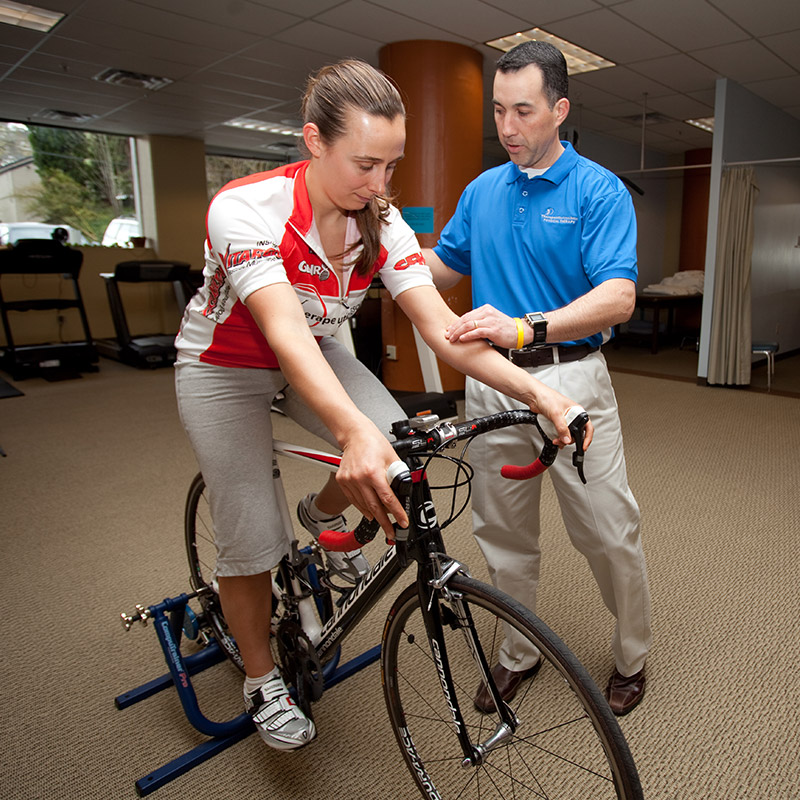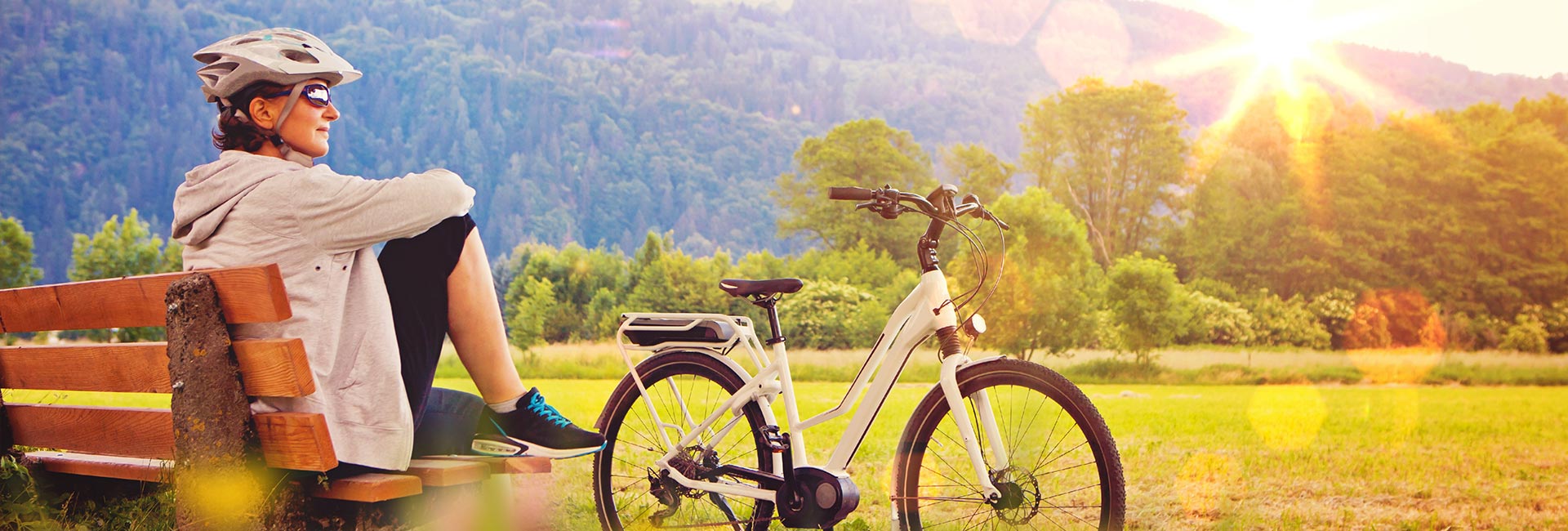One misstep on a soccer field on Mexico’s Isla San Marcos was all it took. I couldn’t believe I was sidelined from skiing for an entire season! After my ACL tear and subsequent reconstruction surgery, it would be at least July before I was back in shape to do all the sports I enjoyed.
I dove headlong into my rehab and, under the advice of my physical therapist, took up cycling as a form of rehab and training. By the time summer rolled around I was hooked and had purchased a new mountain bike. Toiling up hills took effort, but the views were worth it. The Boise foothills, the Snake River Plain, the Owyhee Mountains in the distance — how beautiful to be on two wheels in the mountains!
After so many years of climbing on my feet instead of two wheels, I understood that “summit moment” to be the figurative and literal apex of the climb. But I learned that all was different with mountain biking. The training and prep work leading up to that moment finished, not with a downhill slog, but with a sweet reward — the fast, flowing downhill!
As any person getting into a new sport will attest, there are certainly ups and downs. Soon, my love for biking turned into a sore neck and knee pain after every ride. After consulting with my physical therapist again, it became clear that my new bike fit me, but only just barely. After customizing the position of the saddle, the reach of the handlebars, and the position of my bike cleats, I practically had a new bike all over again. No more pain while riding!
Partly due to these experiences with my physical therapist and my own rehab, I decided to become a physical therapist and help other cyclists get out on our amazing roads and trails. From beginners to experts, there are a few things to focus on that will help keep away those dreaded injuries and post-ride pains.
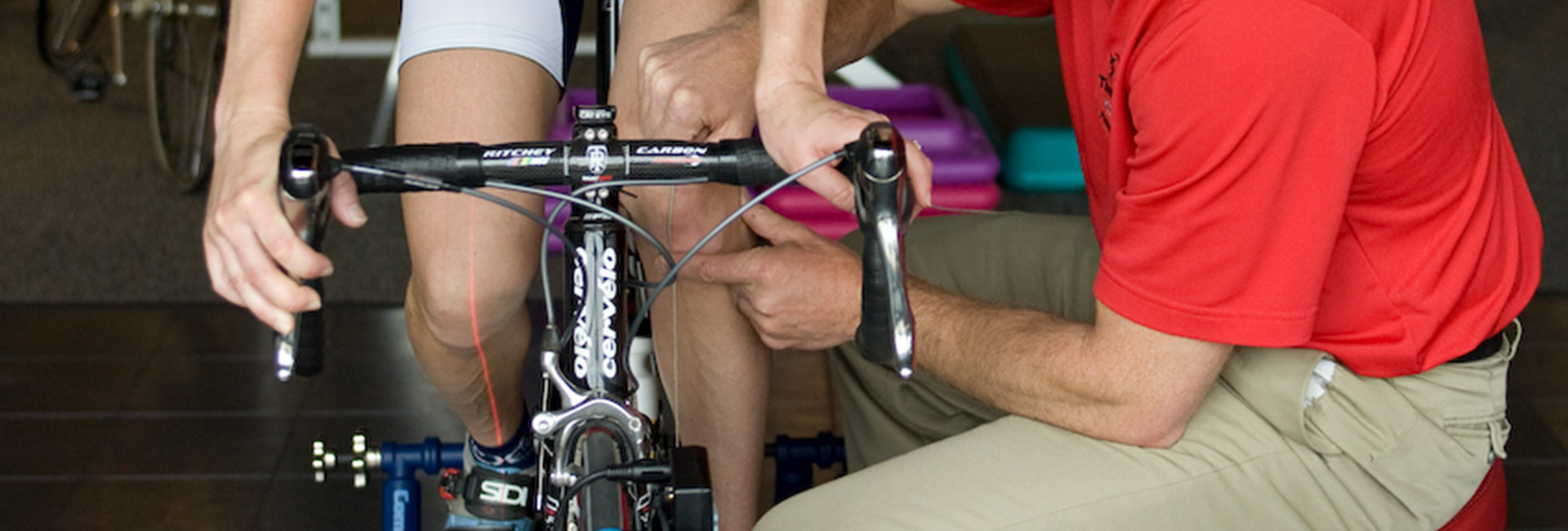
How to get fit for cycling
-
Core training for cycling
The core is of primary importance to any athlete, especially cyclists. This doesn’t mean that every rider needs rippling abdominals, but for good support in the saddle and improved bike handling, being able to lean forward without placing too much weight on the handlebars is essential. The core muscles help transfer energy from your cycling stroke and steering into the bike, thereby improving your efficiency in the saddle as well. Patients who come in with hand, shoulder, and neck pain often need to work on core support. Plank exercises, deadlifts, and crunches can all contribute to better cycling. -
Hip strengthening for cycling
Often overlooked are the hips — the cyclist’s powerhouse. Just grinding up hills on your bike will not usually be enough to build up the strength and endurance required to get the ride done in style and still be able to walk the next day. Any exercise that emphasizes powerful hip extension will be beneficial for cyclists.
Good examples of hip exercises include step-ups, jump squats, and lunges. Probably the least noticed but most important hip muscles are the abductors – crucial stabilizers of knee motion. Purchase a Theraband loop from one of our clinics and start walking sideways all around the house with that band around the ankles. You may also try side planks, side lunges, and single-leg deadlifts. -
Leg strengthening for cycling
One thing you’ll surely notice about all those Lycra-clad riders at the Tour de France is their massive quad muscles. An efficient cycling stroke uses all the muscles in the legs, so strong quads and calves will certainly improve your cycling ability and, just like the hips, working on leg strength off the bike is necessary. Quad muscles respond well to exercises like goblet squats, lunges and leg extension machines, and calves will benefit from heel lifts or weighted heel lifts. -
Arm strengthening for cycling
Finally, we need to address the ability to control the bike from the cockpit. The right strength in the shoulders, arms and hands will also contribute to efficient transfer of energy during pedaling, cornering, and even achieving aerodynamic positions. Cyclists finishing their rides with pain in the wrist, arms, shoulders or neck should consider some focused strengthening for those areas. Good exercises here will include chest press, tricep dips, bicep curls, rows and pushups.
Side Plank on Elbow with Hip Abduction
Lie on your side, resting on your elbow. Raise into side plank position by raising up your hips. Hold this position and lift your upper leg. Lower the leg and repeat.
Perform 2–3 sets of 10 leg lifts per side.
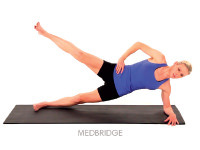
Side Lunge / Lateral Lunge
From a standing upright position with feet shoulder width apart, step to the side with one leg, lowering your body into a lunge position, then return. Do not let your knees collapse inward during the exercise.
Perform 2–3 sets of 10 lunges to each side.
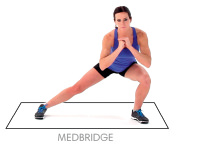
Reverse Crunch
Lie on your back then lift your legs straight upward and cross your ankles. Tighten your abdominals, then push your feet to the ceiling, lifting your lower back off the floor. Do not swing your legs back and forth.
Perform 2–3 sets of 8 lifts.
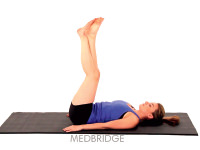
Squat Jumps
Standing with your feet slightly wider than shoulder width apart. Lower with a squat then jump up, moving your arms back as you do. Land in a squat and repeat the movement. Do not let knees collapse inward or move forward past your toes.
Perform 2–3 sets of 10 repetitions.
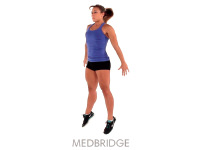
Single Leg Dead Lift
Begin in standing position, then lift one leg off the ground and bend forward at your hips, lowering the kettlebell toward the ground. Then return to an upright position and repeat. Keep your back straight during the exercise and do not let your knee move forward as you lower the weight.
Perform 2–3 sets of 12 repetitions.
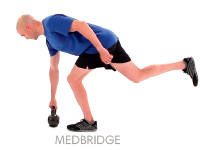
In many instances, the best way to stay injury-free on a bike is to start working out off the bike. Cross-training can be any activity that isn’t cycling. Running, weightlifting, dance classes, kettlebell workouts, or circuit workouts will all help improve cycling performance and help decrease cycling pain and injury.
Unfortunately, sometimes our best efforts fail, and injuries happen. As my personal experience demonstrates, one of a cyclist’s best friends is a physical therapist. Working with a physical therapist will help determine the extent of the problem, with a customized rehabilitation program being the foundation of the treatment plan.
Along with improving the strength of weak muscles, physical therapists also use manual (hands-on) treatments to help the joints or soft tissues work better. A custom bike fit is also common and ensures that the bike and rider work most efficiently.
The activities mentioned above will certainly prolong bicycling enjoyment, but don’t forget to also get out there on the bike! Eat well, drink plenty of fluids, feel the wind and sun, and enjoy life on two wheels. Then let us know about those adventures and how Therapeutic Associates can help. Ride on!
Are you ready for cycling season?
If you have any questions, have pain preventing you from enjoying your cycling, or you are interested in more personal and specific programs, your local Therapeutic Associates Physical Therapy expert can help. Our passion is to help every patient reach their goals on their journey to recovery and optimal performance.
